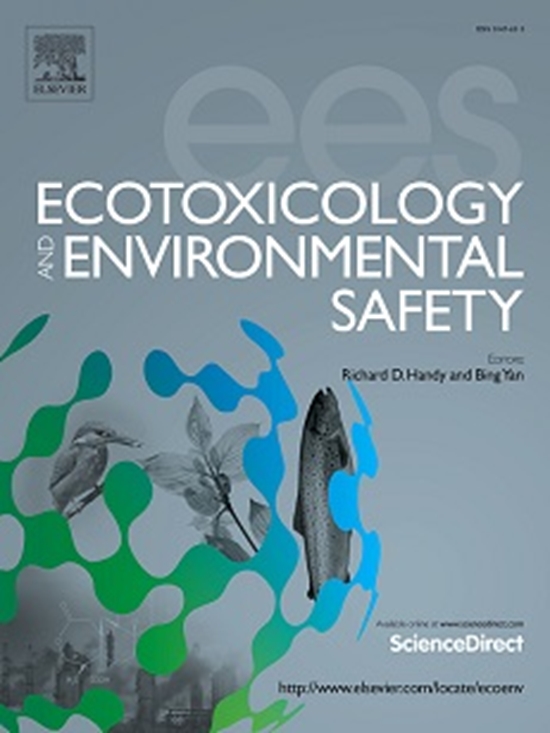سموم استنشاقی: تهدیدی برای سلامت باروری مردانه
سموم استنشاقی: تهدیدی برای سلامت باروری مردانه

این مقاله با عنوان " سموم استنشاقی: تهدیدی برای سلامت باروری مردانه" در سال 2024 در مجله Ecotoxicology and Environmental Safety به زبان انگلیسی توسط مهدیه محمدزاده، امیرحسین خوش اخلاق، لیلیان کالدرون-گارسیدو ناس، والتر دی. کاردونا مایا، توماسو کای به چاپ رسیده است. چکیده فارسی مقاله به صورت زیر است:
مواجهه با آلاینده های هوا به عنوان یک عامل خطر مهم در کاهش کیفیت مایع منی در مردان در سراسر جهان شناخته شده است. کیفیت پایین مایع منی منجر به کاهش نرخ باروری جهانی و استرس شخصی قابل توجه، روابط جنسی ناکارآمد و مشکلات روانی اجتماعی می شود. نظارت مستمر و تلاش موثر برای کاهش آلودگی هوا در صنایع و محیط زیست و ایجاد تغییرات مثبت در سبک زندگی روزمره می تواند از اثرات نامطلوب بر کیفیت مایع منی جلوگیری کرده و از شیوع بالای ناباروری مردان بکاهد. هدف این بررسی خلاصه کردن مطالعات مرتبط با غلظت آلاینده هیدروکربنهای آروماتیک چند حلقهای (PAHs)، فرمالدئید (FA) و BTEX (بنزن، تولوئن، اتیل بنزن و زایلن) بر کیفیت مایع منی است. در این بررسی سیستماتیک، پایگاههای اطلاعاتی Scopus، PubMed و Web of Science تا 13 نوامبر 2022 جستوجو شدند. بیانیه PECO برای شفافسازی سؤال تحقیق فرمولبندی شد و مقالاتی که معیارهای ذکر شده در این بیانیه را برآورده نمیکردند، حذف شدند. به طور کلی 497 مقاله از طریق جستجو در پایگاههای اطلاعاتی بهدست آمد و پس از بررسیها، 26 مقاله که معیارهای ورود را داشتند استخراج و در نهایت در بررسی سیستماتیک لحاظ شد. نتایج نشان داد که مواجهه شغلی و محیطی با PAH، فرمالدئید و BTEX با افزایش غلظت متابولیت آلایندههای سمی در مایعات بدن همراه است. این آلاینده های مرتبط با سم به طور مستقیم یا غیرمستقیم باعث اثرات مضر بر تحرک، حیات، تکه تکه شدن DNA و مورفولوژی اسپرم می شوند. شواهدی در مورد تأثیر آلایندههای PAH، فرمالدئید و BTEX بر کاهش کیفیت مایع منی وجود دارد. بنابراین، اثبات ارتباط بین آلایندههای هوا و عملکرد بیضه در کیفیت مایع منی میتواند نقش موثری در سیاستهای کلان و اتخاذ قوانین سختگیرانهتر برای کاهش انتشار آلایندههای هوا و ترویج سبک زندگی سالم برای بهبود سلامت باروری در مردان جوان داشته باشد.
|
Title |
Inhaled toxins: A threat to male reproductive health |
|
Author(s) |
Mahdiyeh Mohammadzadeh, Amir Hossein Khoshakhlagh, Lilian Calderon-Garcidue ´ nas, Walter D. Cardona Maya , Tommaso Cai . |
|
Published |
1 November 2024 |
|
Journal |
Ecotoxicology and Environmental Safety |
|
Abstract |
Exposure to air pollutants is known to be an important risk factor in reducing semen quality in men across the world. Poor semen quality results in decline in the global fertility rate and significant personal stress, dysfunctional sexual relationships, and psychosocial problems. Continuous monitoring and effective efforts to reduce air pollution in industries and the environment and making positive changes in daily lifestyle can prevent adverse effects on semen quality and reduce the high prevalence of men infertility. This review aims to summarize studies associating pollutant concentrations of polycyclic aromatic hydrocarbons (PAHs), formaldehyde (FA), and BTEX (benzene, toluene, ethyl-benzene, and xylene) on semen quality. In this systematic review, Scopus, PubMed and Web of Science databases were searched until November 13, 2022. The PECO statement was formulated to clarify the research question, and articles that did not satisfy the criteria outlined in this statement were excluded. Generally, 497 articles were obtained through searching databases, and after the investigations, 26 articles that met the entry criteria were extracted and finally considered in the systematic review. The results showed that occupational and environmental exposures to PAHs, formaldehyde, and BTEX were associated with increased metabolite concentration of toxic pollutants in body fluids. These toxin-associated pollutants directly or indirectly cause detrimental effects on sperm motility, vitality, DNA fragmentation, and morphology. There is evidence on the impact of PAHs, formaldehyde, and BTEX pollutants on the reduction of semen quality. Therefore, proving the relationship between air pollutants and testicular function in semen quality can play an effective role in macro policies and adopting stricter laws to reduce the emission of air pollutants and promote a healthy lifestyle to improve reproductive health in young men. |
|
Article Address |
doi.org/10.1016/j.ecoenv.2024.117178 |




ارسال نظر